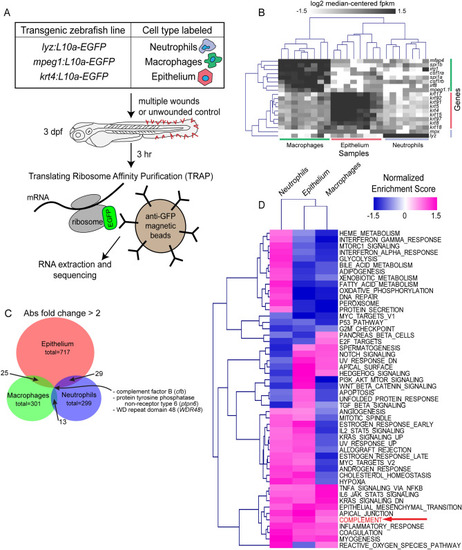Figure 1
- ID
- ZDB-FIG-201003-185
- Publication
- Houseright et al., 2020 - Cell type specific gene expression profiling reveals a role for complement component C3 in neutrophil responses to tissue damage
- Other Figures
- All Figure Page
- Back to All Figure Page
|
TRAP-RNAseq identifies differential expression of genes by neutrophils, macrophages, and epithelial cells in response to wounding. ( |

